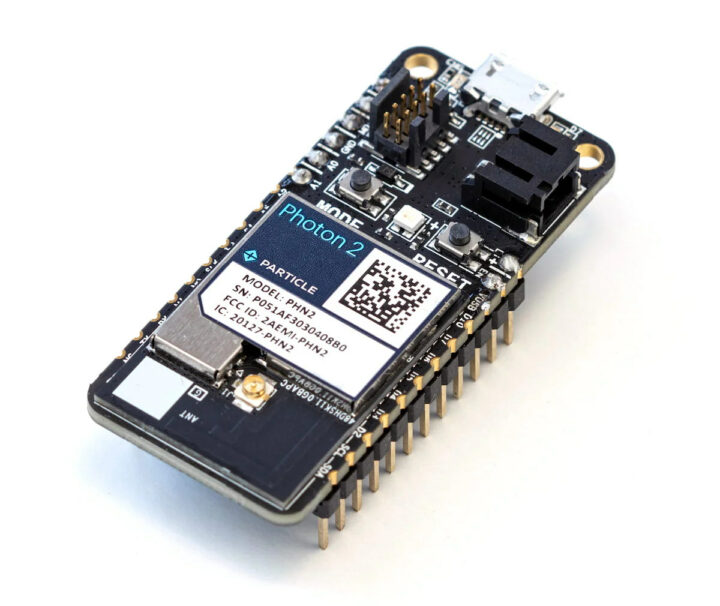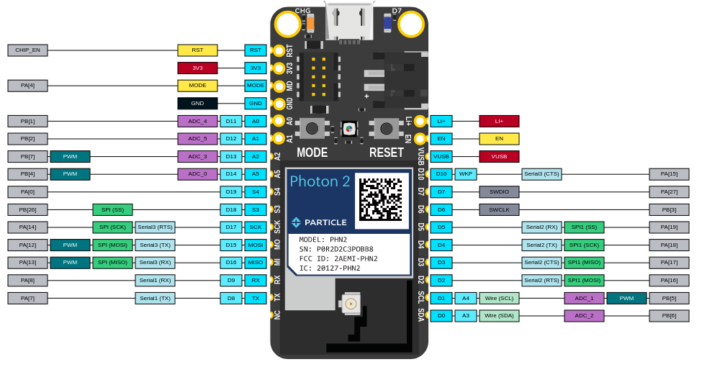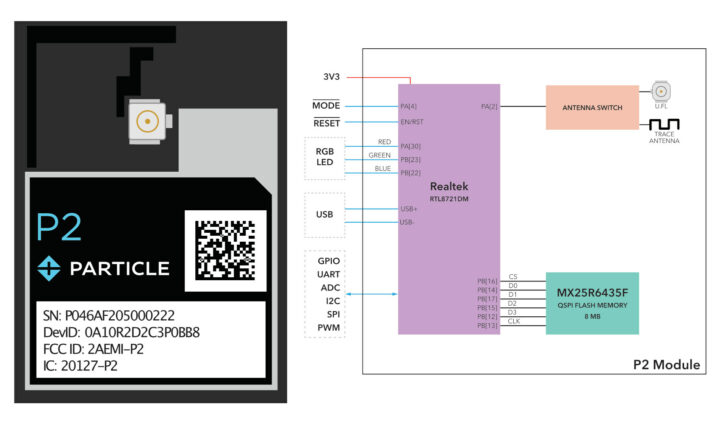Particle has launched the Photon 2 dual-band WiFi and BLE IoT board powered by a 200 MHz Realtek RTL8721DM Arm Cortex-M33 microcontroller, as well as the corresponding Particle P2 module for integration into commercial products.
The original “Spark Photon” WiFi IoT board was launched in 2014 with an STM32 MCU and a BCM43362 wireless module, but the market and company name have changed since then, and Particle has now launched the Photon 2 board and P2 module with a more modern Cortex-M33 WiFi & BLE microcontroller with support for security features such as Arm TrustZone.
Particle Photon 2 specifications:
- Wireless MCU – Realtek RTL8721DM
- CPU – Arm Cortex-M33 core @ 200 MHz
- Memory – 4.5MB embedded SRAM of which 3072 KB (3 MB) is available to user applications
- Connectivity – Dual-band WiFi 4 up to 150Mbps and Bluetooth 5.0
- Security
- Hardware Engine
- Arm Trustzone-M
- Secure Boot
- SWD Protection
- Wi-Fi WEP, WPA, WPA2, WPS
- Security engine: MD5, SHA-1, SHA2-256, DES, 3DES, AES
- Storage – 8MB SPI flash, 2MB of which is available to user applications
- Antenna – Integrated PCB antenna or external U.FL antenna, integrated RF switch
- USB – 1x Micro USB port for power and programming
- Expansion – 12-pin header and 16-pin header with GPIOs, 6x Analog, 5x PWM, 3x UART, I2C, 2x SPI
- Debugging – 10-pin JTAG (SWD) Connector
- Misc – RGB system status LED; charge status LED; Reset and Mode buttons
- Power Supply
- 5V via micro USB
- Integrated Li-Po charger and battery connector
- Dimensions – 51 x 23 mm (Adafruit Feather form factor)
- Certifications – FCC, IC, and CE certified
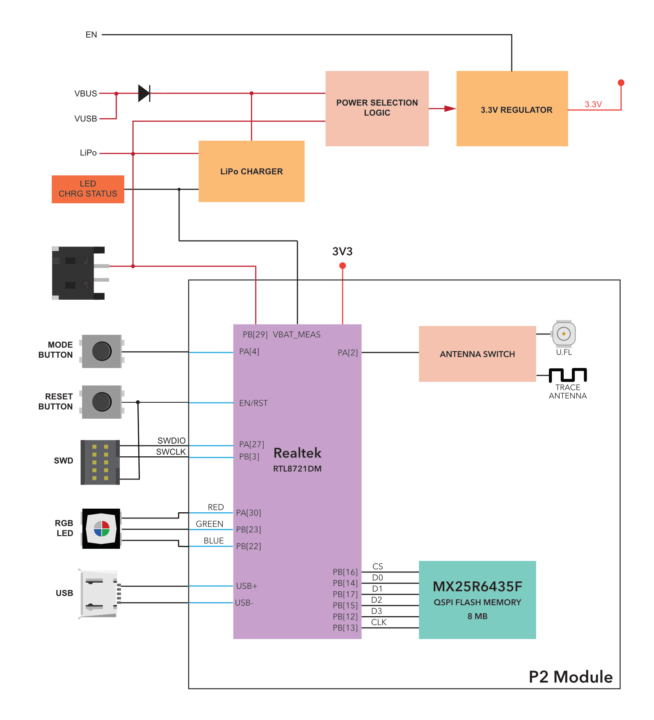
With an Adafruit Feather’s form factor, WiFi & Bluetooth connectivity, the Photon 2 has a design closer to the Particle Argon (2018) than the original Photon board. The new board and module require Device OS 5.0.0 or later as described below:
Most applications consist of two parts: Device OS (“system firmware”) and the user application (“user firmware”). Device OS contains the code necessary to communicate with the hardware on the device (including cellular or Wi-Fi radios), as well as the Particle cloud. The user firmware is the part specific to your product or application and is typically the code you’ve written in C/C++.
Separating the two makes upgrading the smaller user firmware quick and easy allowing for rapid test and debug cycles, even when programming firmware over cellular networks.
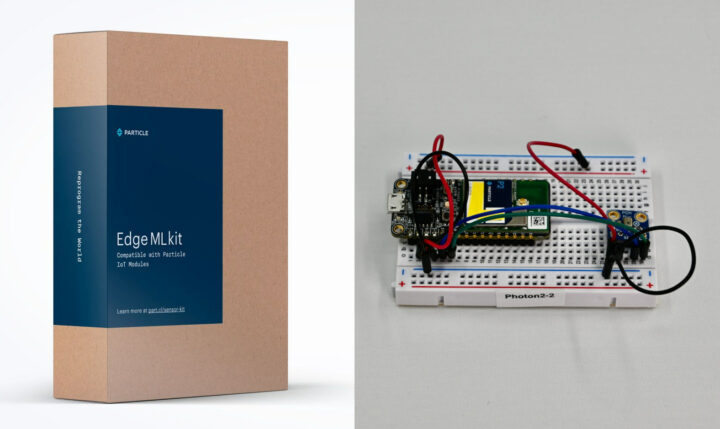
The Photon 2 board and other Particle boards now also support Edge Impulse for machine learning applications such as predictive maintenance, and an Edge ML kit is offered for that purpose with a bunch of sensors including an SHT10 Soil humidity and moisture sensor, a DHT22 temperature & humidity sensor, a DS18B20 waterproof temperature sensor, and a PDM microphone. You’ll find documentation to get started with machine learning on the Particle website.
The Photon 2 and the Edge ML development kit may be great for evaluation and prototyping, but not necessarily for integration into products, so Particle also launched the P2 module with the same Realtek RTK8721DM microcontroller and 8MB QSPI flash as found in the Photon 2 in order to deploy the solution into commercial products.
Pricing for the P2 module starts at $153.60 for 10 units, but the price goes down to $5 in higher volume, and it’s possible to achieve a sub-$3 BoM by licensing the hardware. The Particle P2 online datasheet has more technical details for the module.
The Photon 2 board can be purchased online for $17.95, and if you’d rather use an external antenna than the PCB antenna, you’d need to add $5.65. The Edge ML kit with the extra sensors, a breadboard, and some other components is sold for $69.

Jean-Luc started CNX Software in 2010 as a part-time endeavor, before quitting his job as a software engineering manager, and starting to write daily news, and reviews full time later in 2011.
Support CNX Software! Donate via cryptocurrencies, become a Patron on Patreon, or purchase goods on Amazon or Aliexpress


